


The Oscar ceremony in March 2014 is considered one of the turning points in the popularity of the selfie stick. The reason for this is a live selfie by host Ellen DeGeneres during the Academy Awards with a bunch of stars: Brad Pitt, Julia Roberts, Meryl Streep and the then popular Kevin Spacey. However, this selfie was not made with a Selfie-Stick, but was picked up quite unspectacular by Bradley Cooper with his outstretched arms. It is interesting to learn that Samsung sponsored the Oscars 2014 with $20 million and Ellen DeGeneres new smart-phone. The Galaxy Note was a gift from Samsung on the occasion and one of Samsung marketing strategy in the American market. But Samsung's sponsorship did not quite get away: although Ellen DeGeneres's Oscar photo is today the most famous tweet in the world and received 3,366,101 re-tweets within one year, Samsung sales fell in the final quarter of 2014 and Apple and Samsung sold Christmas 2014 only the same numbers of smart-phones.
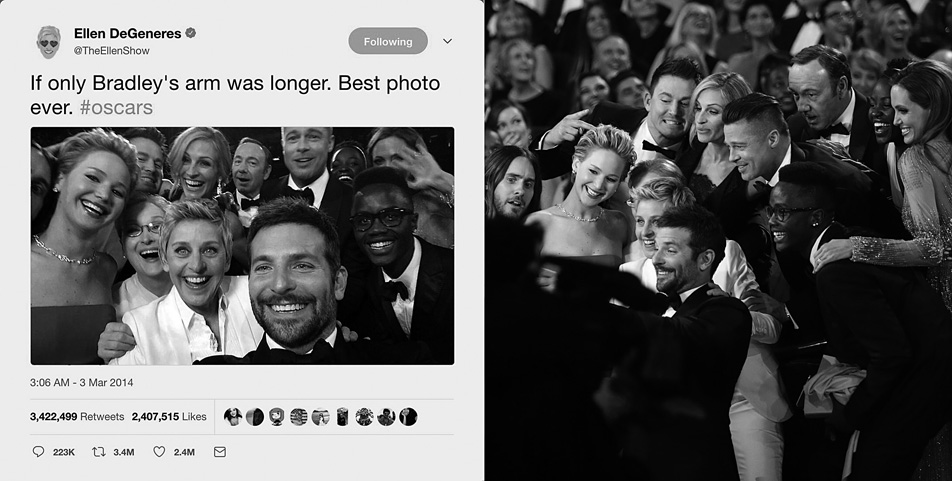
The Oscars march 2014 - source: Ellen DeGeneress@twitter.com
So why did this
photo-event ever influence the popularity of an invention that was not even
used at the moment the photo was taken? The Selfie-Stick was not even a new
invention. The question for the inventor although, is answered very
contentious in the network and mostly unscientific. Therefore, a quick look
at two examples of the “first selfie of the world”. When we type in the
keywords: first selfie into a search engine, you'll immediately see black
and white photos that look like they're being made with a Selfie-Stick, and
the casual observer, or the excited and happy seeker can miss out on details
so that rather the desire to have found the first selfie may be greater than
the exact look. Its time for a closer look.
The intimate couple in the photo, who looks so kindly to the camera, are
Helmer Larrson and his wife Naemi from Wermland in Sweden and the picture is
dated to the year 1934, which seems to agree with the clothes. The crooked
branch, which can be seen leaving the picture on the left side, may be the
reason why some websites claim they have discovered the first Selfie-Stick
photo. More likely than a Selfie-Stick, is the assumption that Helmer
Larrson has used the branch to actuate the shutter located on the left side
of the camera, as apparently no one could be found in the Swedish birch
grove, who could photograph the two lovebirds.
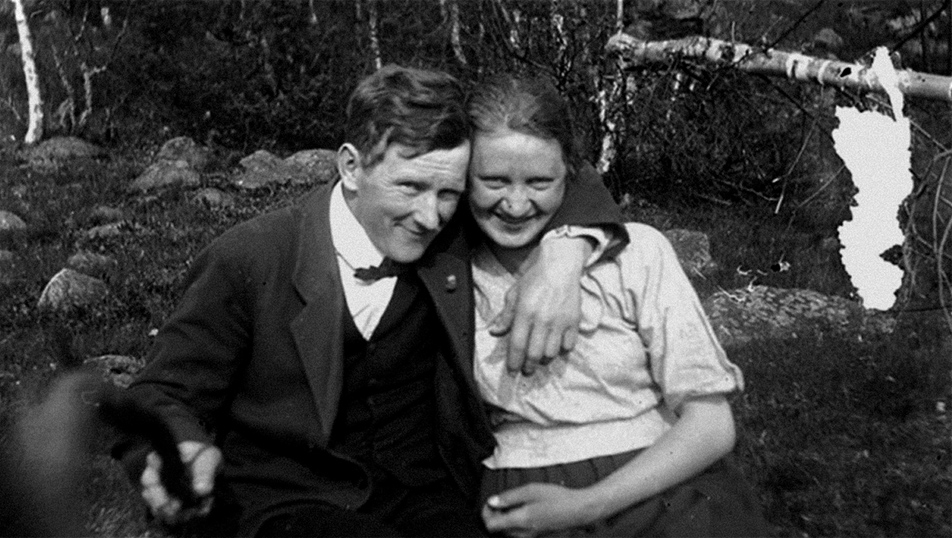
Helmer Larrson and his Wife Naemi from Wermland in Schweden
The same phenomenon of reinterpretation can be found in the photo of journalist Alan Cleaver, which shows his grandparents photogra-phing themselves in 1926 in Rugby, Warwickshire, England. Cleaver played the 2014 photo to various newspapers after Ellen DeGeneres selfie became so popular at the Academy Awards. Again we see a couple with a stick aimed at a camera. Helen Hogg's rather doubtful face expression contrasts with the grinning, smoking face of her husband Arnold. Helen seems to follow her husband's stick skeptically and seam to fear that he might damage the camera instead of being proud to witness the demonstration of a new invention. It's also more likely that Arnold Hogg used the camera on a tripod with his stick on the trigger, otherwise he would have used the Selfie-Stick for more than only one photo — as his son unfortunately told the Dayli Mail in 2014.
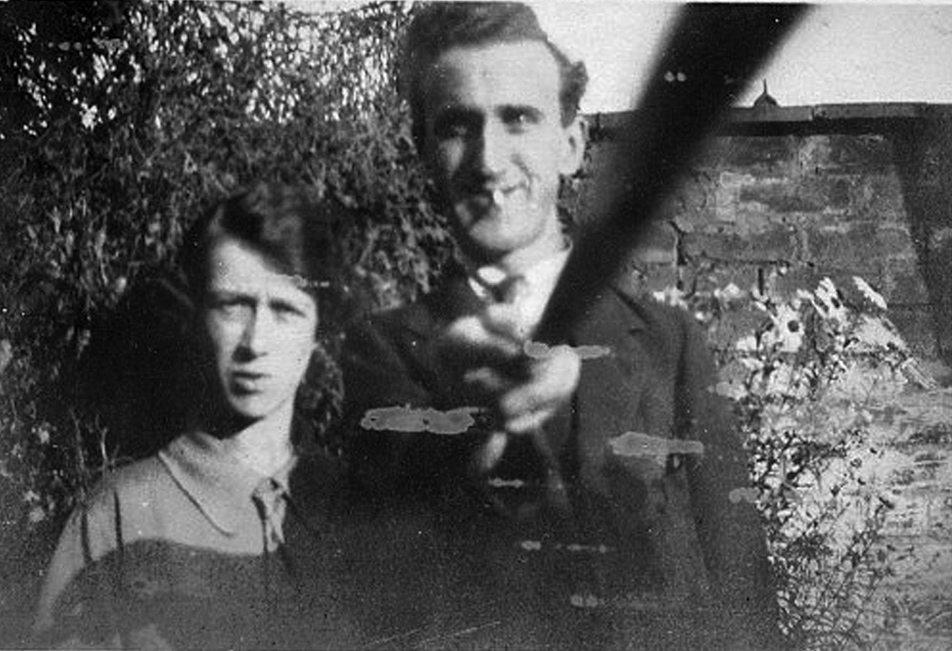
Alan Cleavers Grandparents, 1926 in Rugby, Warwickshire, England
So who really
was the inventor of the Selfie-Stick? Let´s go back 120 years in history to
the year 1898 to a shy, German-Hungarian composer and photographer Gustav
Szathmáry, who dealt with the following problem: How do I avoid being
photographed, even though I want to photograph myself? A question that seems
strange from today's point of view and may seem incomprehensible, since we
are completely familiar with the medium of photography and the number of
photos shot every day was never as high as in our time. He hated the back
than new medium of photography, that Szathmáry encountered in his adopted
home of Paris / France on all street corners. The “wild shooting around” in
public was a “nuisance” to him. In general Szathmáry showed an interest in
technically new developments. His problem was the unwanted image. Being
photographed by a stranger and thus preserved for eternity on a glass slide
or a zinc disc but not knowing where this duplicate of his self is located
and who is looking at it, awakened pure horror in him. His photographic
interest took place in the hidden. In 1898, ten years after George Eastman
had developed the KODAK No.1 in the US, Szathmary's version of the roll-film
camera was created in Paris: BABÁM No.1 (Hungarian for: Darling no.1)
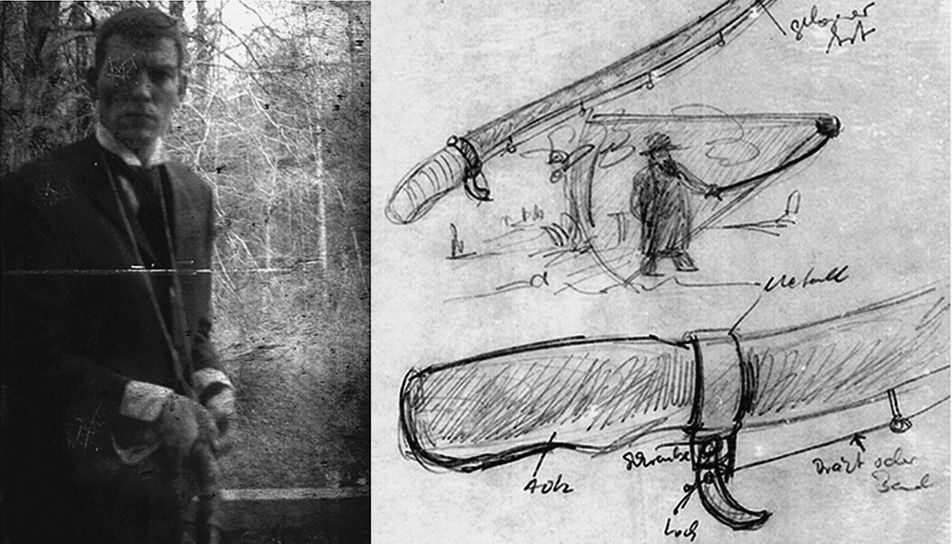
Gustav Szathmáry with the Távkioldö and his camera Babám No1
A camera type equipped with a roll-film that could take up to 50 shots. Eastman's KODAK No.1 even shot 100 pictures, but then had to be sent back to the KODAK factory for development and would have been sent back with a new roll-film and the developed photos. During development, however, the camera could not be used, or one had the luxury of a second camera as a backup. On the other hand, Gustav Szathmáry's BABÁM No.1 had a flap on the back of the camera where the user could exchange the film himself after the 50 shots. The camera was the first step towards the photographic self-determination of Szathmary. The second part he developed was the Távkioldö, (Hungarian for: remote control). On a two-piece, curved wood with a leather handle, the BABÁM No.1 was mounted with leather straps on a wooden plate and triggered by a loop system guided by eyelets. Unlike today's smart-phone-cameras, which have a self-portrait mode, the user of the BABÁM No.1 had to have a great deal of judgment about the position of the camera and the associated section of the image. The Távkioldö was patented in 1897 by Szathmáry in London, which expired in 1917, long after Szathmáry's death and was not renewed. As with today's selfie stick, the characteristic pole runs centrally from below into the picture. In the illustrated self-portrait of Gustav Szathmáry you can still see the strap around the neck to stabilize the considerable weight of the Távkioldö and the camera. A problem that is no longer of concern with today's use of aluminum and plastics in the production of the modern Selfie-Stick.
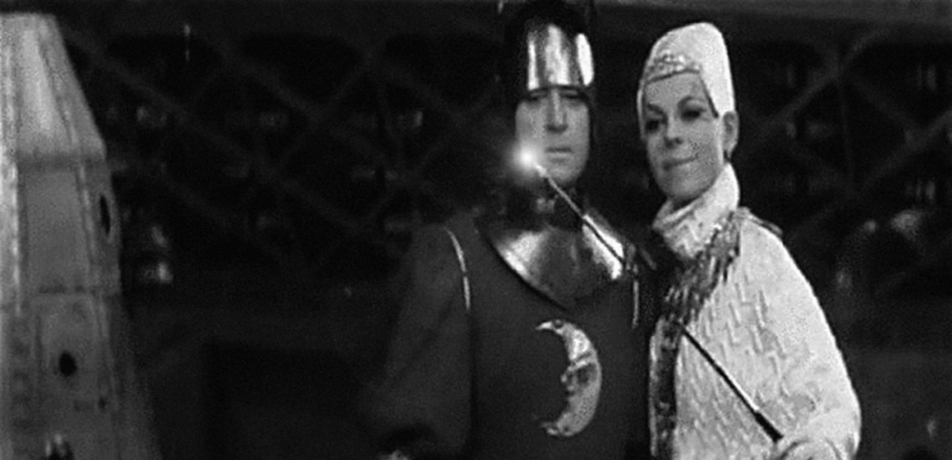
Filmstill: „I killed Albert Einstein“ (Zabil jsem Einsteina, pánové) - source: Ceskoslovenský Státní Film, Filmové studio Barrandov
In the 1960s we
bump into a cinematic anecdote that enjoys great popularity on YouTube. The
Czechoslovakian sci-fi comedy “I killed Einstein” (Zabil jsem Einsteina,
pánové) was created by the director Oldrich Lipsky at the Barrandov Studios
in Prague. In the peculiar plot of the film, women suffering in 1999 by the
growth of beards and infertility due to nuclear power. But it is not a
problem because they have the possibility of time travel. The scientists
decided to extinguish the cause of harmful nuclear power, Albert Einstein. A
group of knightly time travelers is sent to Prague in 1914 to kill Einstein.
In the first third of the movie, there is a scene in which a woman with a
kind of retractable antenna takes a picture of herself and her companion.
The form and handling reminds from today's point of view strongly of a
Selfie-Stick, with integrated camera, including flash and Polaroid image
ejection. Unfortunately, the film has not been widely shown in the West in
its time, which can be considered the reason why this innovative
presentation of a pioneering camera by the Czechoslovak prop-makers also not
widely spread.
Until the beginning of the 1980s, the developments of a self-photographer
remained the exception of an introverted German-Hungarian Composer and
inventive Czechoslovak prop-builder. Then Paris once again was the place of
action of the Selfie-Stick development, when MINOLTA's Japanese technician
Hiroshi Ueda with his wife and two children visited the Louvre. When the
family wanted to take a souvenir photo of themselves, they did ask a little
french boy for his help. The friendly little one took the high-quality and
expensive camera and was no more seen. For Hiroshi Ueda, this crucial
experience was the key to develop a device that would allow him, to no
longer rely on the help of others in creating souvenir photos, and to keep
his cameras. The Telescope Extender Stick, patented in the US in 1983, came
at the wrong time and was a financial flop. The telescopic pole with handle,
device to attach a camera and control from the handle, reminiscent of
today's Selfie-Stick in almost all points. However, Telescope Extender Stick
was considered so unnecessary in its time that it was included in the book
of “101 Ineffective Japanese Inventions” — along with dust-slippers for cats
and the bathing-suit for hydrophobic (to take a bath take, without getting
wet). The patent for the telescope extender stick expired in 2003.
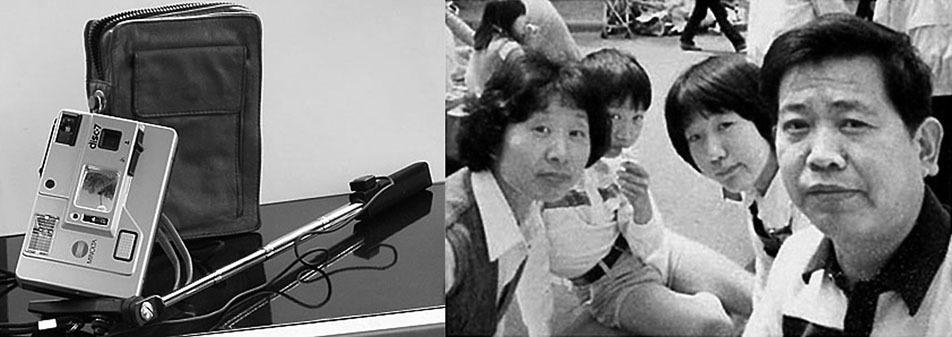
Hiroshi Ueda mit seiner Frau und seinen zwei Kindern, fotografiert mit dem Teleskop-Extender-Stick
In 2002, another inventor went on holiday with his wife, this time Florence in Italy was the place of action. When the Canadian Wayne Fromm wanted to take a souvenir photo of himself and his wife at the Ponte Vecchio, they experience what everyone has already experienced, too many people and no space to set up the camera and the tripod. So they took turns taking pictures, cause they felt uncomfortable to ask someone, and went to the hotel in frustration. Back in Toronto, this experience gnawed at his ingenuity for a few years and in 2005 he finally patented the QUICK POD. Fromm tried worldwide to interested people in his product and even though he got a lot of attention the time was still not ripe for the Selfie-Stick.
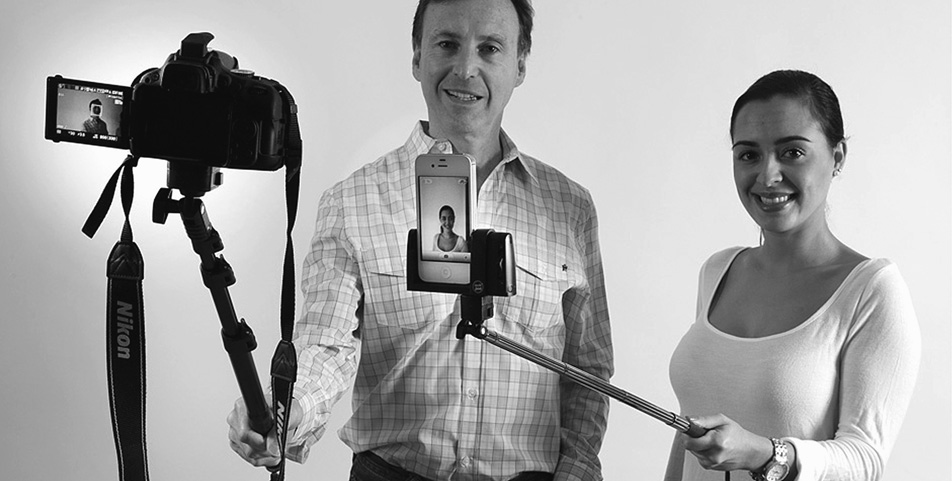
Wayne Fromm with his invention, THE QUICK POD - source: Financial Post Foto: P.J.Thompson/National Post
So what did happen after the Oscar
ceremony in 2014 and after that photo-tweet by Ellen DeGeneres, that this
invention suddenly soared in popularity so much that today it is impossible
to imagine everyday life without it, especially in connection with mass
tourism.
The answer to this is made up of several factors that together allowed a
change in social behavior. The first factor that Hiroshi Ueda missed in 1985
and Wayne Fromm in 2005 for their economic success was the development of
the smart-phone and the associated mobile access to the Internet. The first
smart-phones were already out in the late 1990s, but only with the
introduction of the iPhone in 2007, they gained significant market share.
Due to the permanent Internet access, this triggered a change in Internet
usage behavior. But only with the establishment of the first big social
networks as Facebook in 2004, Twitter in 2006 and Instagramm in 2010, the
decisive factor for mass dissemination of the selfie fever, and thus the
Selfie-Stick, was given. This selfie fever was sparked in the Oscar Night
2014 and is still burning today. So it's not surprising that the biggest
seller of Christmas 2014 was the Selfie-Stick. What Ellen DeGeneres sold to
all the people around the world on that Oscars night was the feeling of
being part of a worldwide community that keeps you 'in the know'. A star
sold together with other stars, the feeling of being a star and thus the
promise that everyone can be a star who also makes a selfie and puts it
online. And they did it in that night even went without a selfie stick.
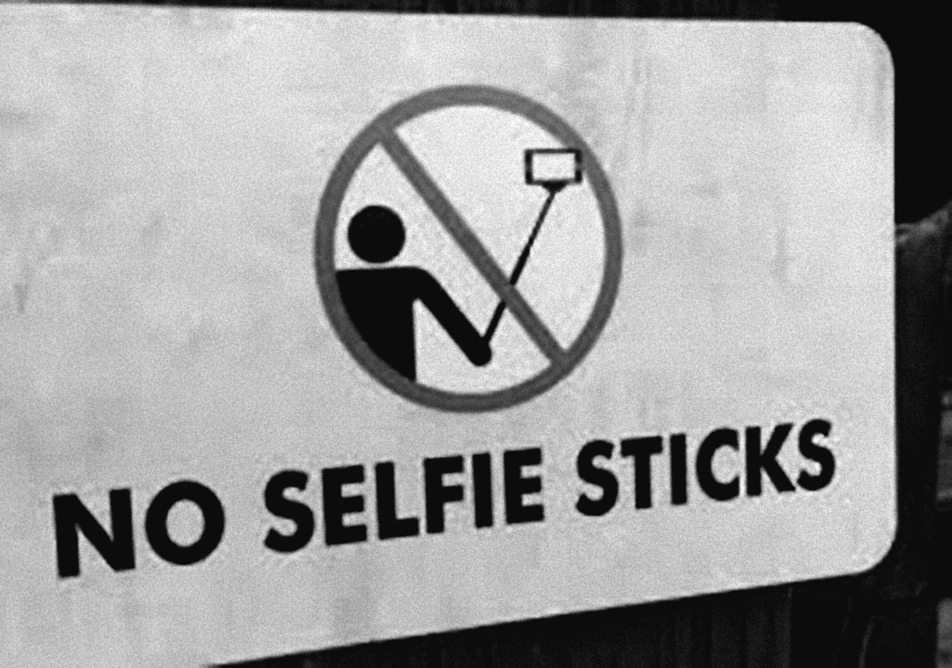
The future of the Selfie-Stick - source: Privat